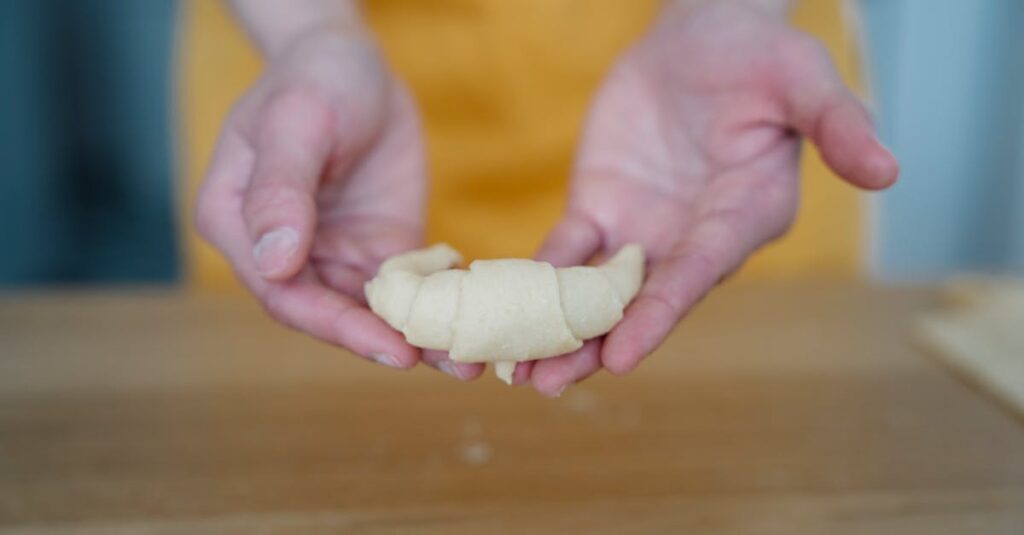Table of Contents
ToggleFrench cooking techniques are like the secret handshake of the culinary world. Mastering them can transform anyone from a microwave meal enthusiast to a kitchen virtuoso faster than you can say “bon appétit.” With a sprinkle of finesse and a dash of flair, these techniques open up a world of flavors that’ll impress even the pickiest of eaters.
Overview of French Cooking Techniques
French cooking techniques form the backbone of modern culinary arts. These methods encompass a range of skills, each contributing to the overall mastery of cooking. Techniques such as sautéing, poaching, and braising highlight various approaches to ingredient preparation.
Sautéing involves cooking food quickly in a small amount of fat over high heat, effectively enhancing flavors. Poaching gently simmers ingredients in liquid, preserving moisture and tenderness. Braising combines both wet and dry cooking methods, allowing tougher cuts of meat to become tender through slow cooking.
Additionally, the use of fundamental elements like stocks and sauces significantly enriches dishes. Stocks serve as a base for many sauces, infusing them with depth and complexity. Emphasizing these foundational aspects ensures that dishes resonate with authenticity.
Classic preparations, such as mirepoix and roux, further illustrate the importance of technique. Mirepoix, a mix of onions, carrots, and celery, acts as a flavor base for numerous recipes. Roux, made by combining equal parts flour and fat, thickens sauces and soups, embodying essential culinary skill.
French cooking teaches knife skills that enhance precision in food preparation. Techniques such as julienne and chiffonade improve presentation and texture. Mastering these knife skills helps create visually appealing and refined dishes.
Techniques in French cooking not only elevate meals but also encourage a deeper understanding of flavor profiles. Refining these skills translates to improved cooking practices, regardless of experience level. Embracing French techniques leads to elevated cooking that impresses even the most discerning palates.
Classical Techniques
Classical techniques form the foundation of French cooking, significantly enhancing culinary skills. These methods focus on precision and technique, creating a framework for numerous dishes.
Sauces and Emulsions
Sauces play a critical role in French cuisine, adding depth and richness to dishes. Mastering classic sauces, like béchamel and hollandaise, greatly enhances flavor profiles. Emulsions involve combining ingredients that typically don’t mix, such as oil and vinegar. Techniques like whisking or using a blender create a smooth, thick texture in dressings and sauces. The French also prioritize emulsified sauces, which elevate the dining experience by providing balance and complexity.
Sautéing and Braising
Sautéing and braising are essential cooking methods that ensure flavor development. Sautéing involves cooking food quickly in a small amount of hot fat, achieving caramelization and depth. Chefs often sauté vegetables, proteins, and seafood, creating vibrant, flavorful dishes. Alternatively, braising combines slow cooking and moisture, transforming tougher cuts of meat into tender delicacies. This method relies on a mixture of dry and wet heat, allowing flavors to meld beautifully. Both techniques contribute to a well-rounded culinary repertoire, essential for elevating any meal.
Modern Techniques
Modern French cooking techniques incorporate innovation and precision to enhance culinary creativity. Two prominent methods include sous vide cooking and molecular gastronomy, each presenting unique applications in contemporary cuisine.
Sous Vide Cooking
Sous vide cooking involves vacuum-sealing food in a bag and immersing it in a water bath at a controlled temperature. This technique ensures even cooking, resulting in perfectly tender and flavorful dishes. Chefs often utilize sous vide for proteins, such as chicken, beef, and fish, allowing precise temperature management. Cooking times can range from one hour to multiple days, depending on the desired outcome. Flavor infusions become easier, as marination occurs during the sous vide process. This method retains moisture and nutrients, promoting healthier meals.
Molecular Gastronomy
Molecular gastronomy blends science and art, transforming traditional cooking into innovative experiences. Techniques in this realm involve the use of spherification, foaming, and gelification. Spherification creates caviar-like spheres from liquids, adding a burst of flavor upon consumption. Foaming introduces light and airy textures to sauces and dishes, enhancing visual appeal and mouthfeel. Gelification transforms liquids into gels for unique presentations. This approach encourages creativity, allowing chefs to deconstruct flavors and textures, producing unexpected culinary delights. Molecular gastronomy challenges conventional cooking norms, pushing the boundaries of flavor and aesthetics.
Essential Tools for French Cooking
French cooking relies on several essential tools that enhance both technique and presentation. Mastering these tools brings the joy of French cuisine into any kitchen.
Knives and Cookware
Chef’s knives rank as one of the most indispensable tools. Sharp blades, versatility, and comfort make them crucial for precision cutting. A cutting board complements the knife, providing a stable surface to work on. Saucepans and sauté pans, made from stainless steel or copper, distribute heat evenly, ensuring optimal cooking. Dutch ovens serve well for braising and slow-cooking, allowing flavors to meld beautifully. Non-stick cookware also plays a vital role, facilitating easy cooking and cleaning, especially when preparing delicate items like crepes.
Kitchen Appliances
Essential kitchen appliances streamline the cooking process in French cuisine. Food processors efficiently chop, slice, and puree ingredients, saving time and effort. Stand mixers handle tasks like kneading dough or whipping cream, providing consistent results. Immersion blenders offer convenience for smooth soups and sauces, blending directly in pots. Sous vide machines give chefs precise temperature control for perfect cooking results, resulting in tender meats. Finally, a good-quality oven becomes essential for baking pastries and roasting meats, creating deliciously crafted dishes.
Mastering French cooking techniques opens the door to a world of culinary creativity and sophistication. These foundational skills not only enhance the flavors of dishes but also empower chefs to express their unique styles. From traditional methods like sautéing and braising to modern innovations such as sous vide and molecular gastronomy, each technique adds depth to the cooking experience.
Equipping oneself with essential tools further elevates the culinary journey. As chefs embrace both classic and contemporary methods, they cultivate a deeper appreciation for the art of cooking. This journey of mastery is ongoing and rewarding, inspiring chefs to continually refine their skills and explore new culinary horizons.




